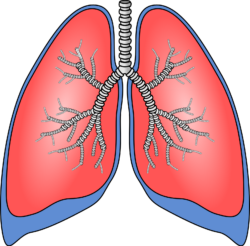DAP, Inc.
DAP, Inc., a venerable company with origins dating back to 1865, has established a reputation for producing a wide array of home repair and construction materials. Initially known for its sealing wax, the company expanded its product line following a strategic partnership with George Pontius in 1913. The formulation of DAP, a name derived from its 1957 merger with the Armstrong Company, signified a new chapter of growth and product innovation. Despite its success, DAP's historical use of asbestos until 1977 has cast a shadow over its legacy, resulting in health and legal challenges. Today, DAP, Inc. is recognized for its commitment to providing high-quality sealants, adhesives, and other building solutions, while navigating the complexities of its past asbestos-related issues.

Key Takeaways
- DAP, Inc. has a long history, starting as a sealing wax producer in 1865 and undergoing various mergers and acquisitions over the years.
- The company used asbestos in its manufacturing until 1977, despite the known health risks associated with exposure to asbestos.
- Workers at DAP, Inc., particularly those involved in the production of building materials, were at the highest risk of asbestos exposure.
- Eligible cancers for filing an asbestos claim include lung cancer, mesothelioma, throat cancer, esophageal cancer, bronchial cancer, gastrointestinal cancer, and colorectal cancer.
DAP’s Founding and Origins
DAP, Inc. was established in 1865 as a manufacturer of sealing wax, marking the beginning of its long-standing presence in the construction and home repair industry. The company's historical significance is rooted in its transformative impact on the sealing wax industry, catalyzing a shift from a niche market to a cornerstone of construction material technology. With a strategic approach to innovation, DAP expanded its product line beyond sealing wax, which initially positioned the firm as a key player in a burgeoning market. This expansion was accompanied by meticulous attention to the evolving demands of both industrial and retail sectors, ensuring DAP's offerings remained relevant and competitive. Through a detailed-oriented evolution, DAP's contribution to the industry is underscored by its enduring legacy and its pivotal role in setting industry standards.
The Dicks-Pontius Partnership
In 1913, amid its ongoing expansion from sealing wax into a broader range of products, the company entered into a partnership with George Pontius, leading to the formation of the Dicks-Pontius Company. This strategic alliance was pivotal in diversifying the company's product line and enhancing its market presence. However, the Dicks-Pontius partnership also marked the incorporation of asbestos into home repair products—a decision that would have long-term health implications for workers and consumers. The analytical approach to this historical juncture must consider the then-commonplace use of asbestos for its durability and heat resistance, against the backdrop of contemporary knowledge of its carcinogenic properties. The partnership's legacy is thus twofold: it was a key step in DAP, Inc.'s corporate evolution and a precursor to later health and legal challenges associated with asbestos use.
Transition to DAP, Inc
Merging with the Armstrong Company in 1957, the company transitioned to its new identity as DAP, Inc., signifying a major shift in its corporate trajectory. This strategic realignment presented transition challenges such as integrating operations, streamlining product lines, and rebranding the merged entity. The historical impact of this move was profound, marking a pivot from a regional player to a national force in the manufacturing of home repair products and building materials. The transition necessitated a comprehensive analysis of market trends, an overhaul of supply chain logistics, and a reevaluation of the workforce to ensure alignment with the company's renewed objectives. DAP, Inc.'s evolution during this period laid the groundwork for its subsequent expansions and dictated the strategic direction for decades to come.
Acquisition by USG Corporation
Following its trajectory of growth and realignment, DAP, Inc. was acquired by USG Corporation in 1987, marking a significant chapter in the company's expansion. The USG Corporation acquisition was a strategic move, expanding the corporation's portfolio in the building materials sector. An analytical breakdown of the acquisition reveals key points:
- The merger was a calculated effort to enhance USG Corporation's market share.
- DAP, Inc.'s diverse product line complemented USG's existing offerings.
- The acquisition allowed for USG to consolidate its position in the industry.
- Synergies realized post-acquisition led to cost savings and operational efficiencies.
- This strategic move was critical in USG's long-term growth plan.
The meticulous approach to the acquisition underscores USG Corporation's commitment to strengthening its competitive edge in the marketplace.
RPM International Ownership
Acquired by RPM International in 1999, DAP, Inc. entered a new phase of corporate stewardship, broadening its market presence and enhancing its product innovation strategies. This strategic move by RPM International was in line with its history of expanding its portfolio through other acquisitions, aimed at consolidating the company's position in the specialty chemicals industry. The acquisition of DAP, Inc. signified a noteworthy addition, considering DAP's prior use of asbestos in manufacturing, which had profound implications on workers' health. It is imperative to recognize the impact that asbestos had on the health of individuals exposed in industrial settings, leading to serious diseases such as mesothelioma and lung cancer. RPM International's ownership marked a critical turning point in DAP's operational approach, aligning with industry standards and health regulations.
Asbestos Use in Products
DAP, Inc. incorporated asbestos into various home repair products and building materials until 1977, posing significant health risks to workers and consumers. This hazardous material has been irrefutably linked to a spectrum of asbestos-related diseases, prompting scrutiny of corporate accountability.
- Asbestos-containing materials were prevalent in DAP products pre-1977.
- Health risks of asbestos include lung cancer and mesothelioma.
- Regulatory changes in the late 20th century curtailed asbestos use in manufacturing.
- Liability for exposure led to legal challenges and financial compensation for affected individuals.
- Safety protocols were revised to mitigate exposure to hazardous asbestos fibers.
The strategic phase-out of asbestos from DAP, Inc.'s products was a critical response to the increasing awareness of the material's dangers, reflecting a detail-oriented approach to align with health regulations and consumer safety standards.
Risks to Construction Workers
Construction workers frequently faced the highest levels of asbestos exposure when using DAP, Inc. products, particularly before safety regulations were enhanced. Asbestos, once a common component in building materials due to its heat resistance and strength, has been linked to serious health effects, including asbestosis, lung cancer, and mesothelioma. The strategic mitigation of these risks has become a priority within the construction industry. Detailed records and rigorous protocols are now in place to minimize the risks of asbestos exposure to workers. Despite these measures, the latency period of asbestos-related diseases necessitates continued vigilance. Workers previously employed in environments with DAP, Inc. products must be informed of potential health effects of asbestos and be encouraged to undergo regular medical assessments to detect any early signs of asbestos-related conditions.
DAP’s Asbestos Production
Manufacturing building materials and home repair products, DAP, Inc. incorporated asbestos into its production processes until 1977, despite the known health risks associated with the material. The strategic use of asbestos was motivated by its desirable properties such as durability and fire resistance, which were sought after in the construction industry. However, the analytical approach to evaluating DAP's manufacturing process reveals a grave oversight in addressing the health risks associated with asbestos exposure.
- Asbestos was a common additive in DAP's product formulations.
- Production ceased in 1977 due to increasing health concerns.
- Long-term exposure linked to serious respiratory conditions.
- DAP's operational changes were influenced by regulatory standards.
- Health and safety of workers and consumers became a guiding principle post-1977.
Continued Asbestos Findings
Despite cessation claims, a 2007 study revealed the persistence of asbestos in DAP, Inc.'s products, underscoring the complexity of eradicating its legacy from manufacturing processes. The findings invoke significant concern regarding asbestos in home repair products, a category presumed safe post-ban. The health risks of asbestos exposure—ranging from asbestosis to malignant mesothelioma—necessitate a rigorous, strategic approach to mitigate ongoing exposure threats.
| Year of Study | Asbestos Detection in Products |
|---|---|
| 2007 | Confirmed Present |
| Prior Claims | Cessation in 1977 |
| Implications | Ongoing Health Risks |
An analytical review identifies the need for enhanced oversight and comprehensive testing to ensure consumer safety and uphold regulatory standards. Continued vigilance is imperative to protect public health from the insidious legacy of asbestos.
Recognizing Eligible Cancers
Individuals exposed to asbestos through products from DAP, Inc. may develop several types of cancer, with lung cancer and mesothelioma being the most commonly eligible for legal claims. The identification and recognition of these cancers are critical for pursuing mesothelioma compensation and holding the company accountable for the risks to painters and other workers. An analytical review of medical and occupational histories is necessary to strategically align legal efforts with the goal of securing rightful compensation.
- Lung Cancer: Persistent cough, chest pain, and shortness of breath may signal eligibility.
- Mesothelioma: Chest pain, fluid buildup, and respiratory difficulties warrant examination.
- Laryngeal Cancer: Hoarseness or persistent sore throat could indicate asbestos-related impact.
- Ovarian Cancer: Asbestos can affect the ovaries, leading to potential claims.
- Stomach Cancer: Abdominal pain and weight loss may be symptoms of asbestos ingestion.
Filing Asbestos Claims
Victims of asbestos exposure through DAP, Inc. products can seek compensation by filing a claim with the assistance of specialized attorneys. The filing process is intricate, demanding a strategic approach to establish proof of exposure and its direct link to asbestos-related diseases. Determining compensation eligibility requires detailed analysis of medical records, employment history, and the extent of exposure. These elements are critical in constructing a robust case. To navigate the complexities of asbestos litigation, it is essential to engage attorneys who are proficient in the nuances of such claims. They can adeptly handle the procedural requirements, ensuring that all filings adhere to legal standards and deadlines to secure rightful compensation for affected individuals.
Secondary Exposure Risks
We must acknowledge that family members of DAP, Inc. workers were also at risk, suffering from secondary asbestos exposure through fibers unwittingly brought into their homes. These risks to family members were not immediately apparent, as secondary exposure occurs indirectly. Nonetheless, the implications are long-term and potentially fatal.
- Asbestos fibers could be transferred via clothing, hair, and skin.
- Household activities, such as laundry, could disturb these fibers.
- Family members were susceptible to the same asbestos-related diseases as workers.
- Compensation for secondary exposure claims requires strategic legal approaches.
- Medical documentation linking exposure to disease is crucial for claims.
Strategically, it is essential to analyze the specific circumstances of each case to determine the eligibility for compensation for secondary exposure, ensuring a detail-oriented approach to justice for affected families.
Seeking Legal Assistance
Seeking legal assistance enables affected workers and their families to pursue compensation for damages resulting from asbestos exposure at DAP, Inc. Legal experts specializing in asbestos litigation can provide strategic guidance for understanding asbestos-related diseases, ensuring claims accurately reflect the medical and emotional impact. The risks to painters, remodelers, and plumbers, who may have been unaware of the asbestos content in DAP products, underscore the importance of detailed case assessments. An analytical approach to legal assistance involves scrutinizing occupational histories and medical records to establish a clear link between exposure and illness. By meticulously documenting the scope of exposure and its repercussions, attorneys can formulate compelling arguments for rightful compensation, thereby offering a pathway to justice for those affected by DAP, Inc.'s asbestos use.
Wrongful Death Compensation
Many families of workers who succumbed to asbestos-related diseases are entitled to seek wrongful death compensation due to exposure while employed at DAP, Inc. The compensation for victims' families is a critical aspect of the legal redress available, aiming to provide financial relief for the loss of a loved one. The legal process for wrongful death cases involves a series of strategic steps that require careful navigation to ensure that families receive just compensation.
- Thorough analysis of employment history and asbestos exposure at DAP, Inc.
- Collection of medical records and documentation of asbestos-related illnesses.
- Calculation of economic and non-economic damages sustained by the family.
- Negotiation with responsible parties or litigation to secure fair compensation.
- Expert legal guidance to streamline the compensation recovery process.
Contacting Asbestos Lawyers
While victims of asbestos exposure at DAP, Inc. and their families navigate the complexities of their situation, consulting with specialized asbestos lawyers can provide the necessary legal expertise to pursue compensation. Understanding the risks of asbestos exposure is critical in building a compelling legal case. Asbestos lawyers are well-versed in the medical and occupational nuances that underpin these cases. They strategically assess each client's history of exposure and related health conditions to formulate a robust claim.
The legal process for filing asbestos claims demands meticulous documentation and adherence to procedural deadlines. Asbestos attorneys navigate these requirements deftly, ensuring that all evidence is methodically presented and legal strategies are tailored to the nuances of each case. Their analytical approach maximizes the chances of securing rightful compensation for their clients.
Frequently Asked Questions
How Has DAP, Inc. Contributed to Community Initiatives or Environmental Sustainability Practices Given Its Past With Asbestos Use?
In addressing corporate responsibility, entities often engage in corporate philanthropy and green initiatives to mitigate past environmental impacts. A strategic approach entails investing in sustainable practices, supporting community projects, and detailing transparent progress reports. Such measures not only reflect a commitment to environmental stewardship but also serve to rebuild trust and foster positive community relations, essential for companies previously involved with hazardous materials.
What Are the Current Safety Measures and Health Standards That DAP, Inc. Implements in Its Manufacturing Processes to Protect Workers?
In the pursuit of safety, "prevention is better than cure" holds paramount importance. Effective manufacturing safety measures necessitate rigorous employee training programs that instill best practices and hazard awareness. Equally vital is the provision of appropriate protective equipment to shield workers from potential risks. These precautions, combined with a strategic implementation of health standards, ensure a detail-oriented approach to workplace safety, minimizing occupational hazards and promoting overall well-being.
How Does DAP, Inc. Ensure the Safety and Compliance of Its Current Product Line With Industry Regulations?
To ensure safety and regulatory compliance, companies implement rigorous product testing protocols. This involves analyzing materials and performance against industry standards. Strategic regulatory engagement is also crucial, where firms proactively collaborate with regulatory bodies to stay abreast of evolving legislation. By doing so, companies ensure that their product lines meet the required safety benchmarks, mitigating risks and safeguarding consumer and worker well-being.
Are There Any Educational Programs or Resources That DAP, Inc. Offers to the Public or Professionals Regarding the Safe Handling of Building Materials?
In the vast ocean of industry knowledge, educational outreach stands as a lighthouse, guiding professionals and the public alike. Resource availability is paramount to ensuring the safe handling of building materials. An analytical approach reveals that proactive companies often develop comprehensive programs and materials, strategically designed to detail best practices and regulatory compliance. Such initiatives are critical in equipping individuals with the skills and understanding necessary for safety in construction and repair environments.
Has DAP, Inc. Established Any Funds or Foundations to Support Research Into Asbestos-Related Diseases or to Aid Those Affected by Such Illnesses Beyond Legal Claims?
Regarding the establishment of funds or foundations to back research or support individuals affected by asbestos-related diseases, there is a growing recognition of the need for a multifaceted approach. Asbestos litigation trends underscore the shifting legal landscape, compelling companies to demonstrate corporate responsibility. Meanwhile, the expansion of survivor support networks reflects a strategic commitment to holistic care. These initiatives are critical in addressing the long-term impacts on affected populations.

This post has been generated by AI and was not reviewed by editors. This is Not legal advice. Please consult with an attorney.




